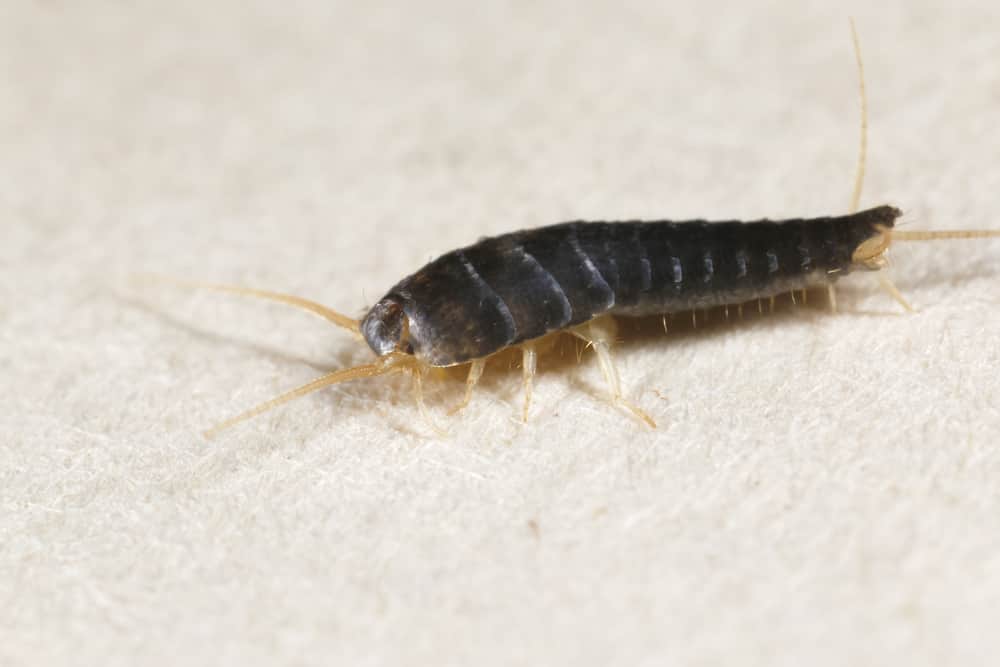Silverfish can be a common sight around homes. These small, pearl gray insects may be some of the oldest creatures on the planet, existing about 100 million years before dinosaurs were around. Today, they may often be seen scurrying across the floor or climbing on the walls of your house. They’re active at night, which means you may run across these unwelcome visitors right before you go to bed, or if you get up to use the bathroom in the middle of the night.

Silverfish can be seen almost anywhere in your home, including in the bathroom and the kitchen, which leads many people to believe they live in drains. Do they actually live in drains, and what attracts them to our homes?
Where Do Silverfish Live?
Contrary to popular belief, silverfish do not live in drains. They are attracted to moisture and warm, dark places with high levels of humidity (above 75 percent), which explains why they are frequently found in bathrooms. However, they cannot climb on smooth vertical surfaces, so they are frequently found trapped in bathtubs and sinks.
Other places in your home where you may encounter silverfish include kitchens, laundry rooms, garages, cabinets and crawl spaces. Silverfish feed on carbohydrates, proteins and mold. In the kitchen, they may be found dining on flour, rolled oats and starches, and they have even been found in sealed boxes of food. Other popular food sources for silverfish include wallpaper glue and book bindings. Ever open a book and see a silverfish dart out? Now you know why.
Silverfish can enter homes through cracks and voids, and homeowners may accidentally carry them inside on boxes or bags.
Are Silverfish Harmful?
While silverfish may be unwelcome houseguests, thankfully, they are not known to be harmful to humans. They do not bite, and there is no evidence to suggest that they are poisonous. Additionally, they are not known to carry pathogens that cause disease.
Despite this, like many other insects, silverfish do shed their skins throughout their adult lives (a process known as molting), and these discarded skins may cause allergic reactions and pose a risk to people with asthma.
How to Help Prevent Silverfish Infestations
It’s true that silverfish are basically harmless; they’re more of a nuisance than a threat. Still, nobody wants a silverfish infestation in their home. You can help keep these pests from taking over by doing the following:
Removing moisture – Repair leaky faucets and use a dehumidifier to remove moisture from the air. If you bathe or shower in the evening, you may also want to wipe down the bathtub or shower to remove water before silverfish become active. Outdoors, you should ensure that water drains away from your home and that your gutters and downspouts are free of debris.
Blocking entrance points – Use caulk to seal any cracks or crevices that may provide entry to your home. Common access points include cracks under and behind baseboards, around windows and door trim.
Vacuum regularly –Vacuum carpet, floors, upholstered furniture, cracks and crevices to remove young or adult silverfish.
While uncommon, a true silverfish infestation will likely require professional assistance. Over-the-counter treatments rarely address silverfish eggs, and infestations can be difficult to treat, especially if they are found in wooden shingle roofs, which are prone to mold.
The pest control professionals at Terminix® can help you keep these prehistoric pests at bay. Our professionals know how to find silverfish hiding places and their eggs, and we provide treatment plans to combat existing and future infestations. And a pest control plan with Terminix covers a lot more than just silverfish.



